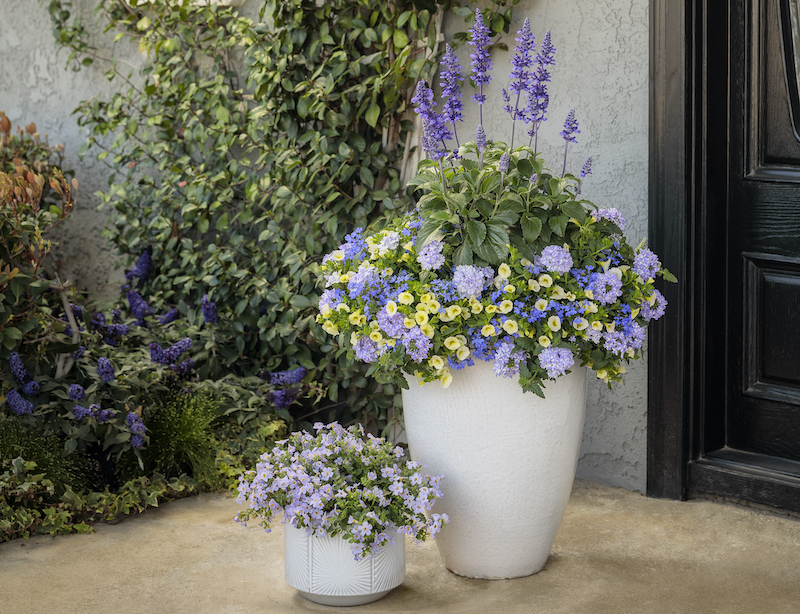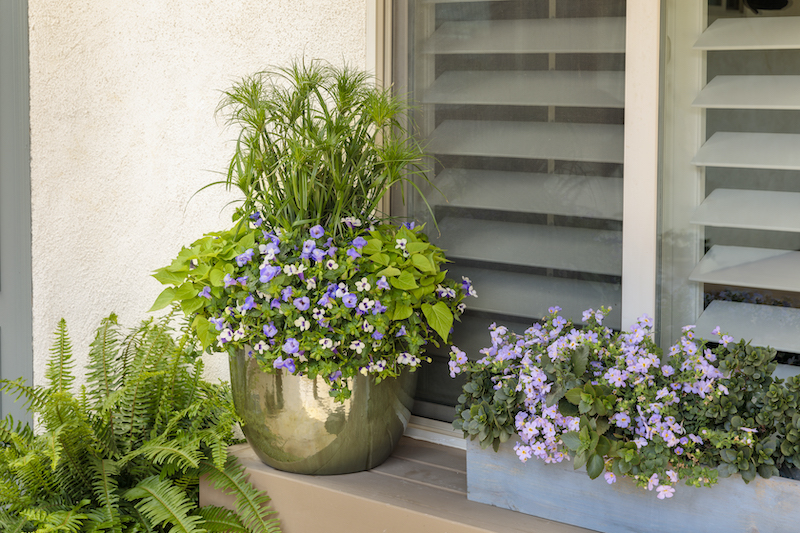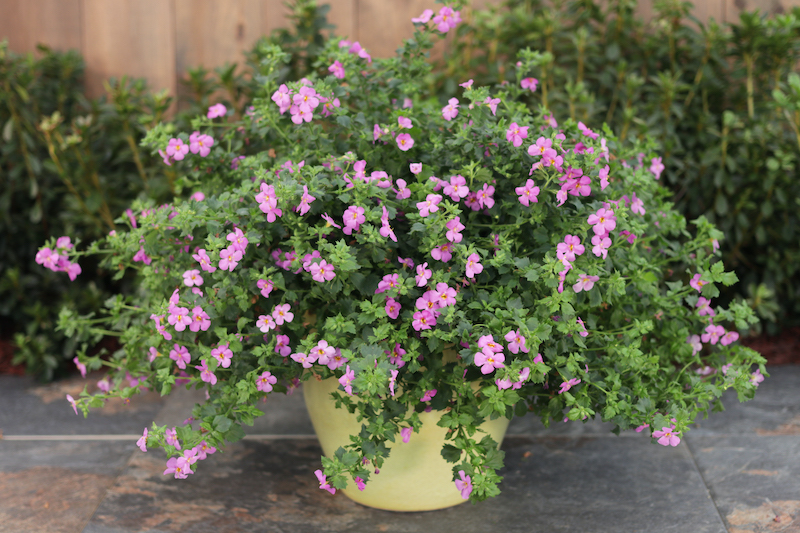Bacopa thrives in hanging baskets and containers. The plant can reach 3-12 inches tall and 10-36 inches wide, making it a beautiful eye-catching choice for patios, doorways and even windowsills. The plant does best in full sun but can also tolerate partial and full shade. You can place your container on a patio or hang it on a deck that receives full to partial sun.
Bacopa is also a great window box plant. If you live in a hot location, put your bacopa in a location where afternoon shade is available. The number of bacopa to put in your pot depends on the type and size of the pot, but a good rule of thumb is four plants.

Planting Bacopa in Pots
You can plant your outdoor bacopa in early spring or when the danger of the last frost has passed. Bacopa prefers full sun, but can also tolerate partial and full shade. If you live in a very hot zone, you’ll want to place your container or basket in a location that receives afternoon shade.
Bacopa does well in large containers, but make sure to space your bacopa a little under 10 inches apart. A good rule of thumb is to plant no more than four bacopa plants in one container. Make sure your container has drainage holes.

Best Soil For Bacopa in Pots
If you are planting bacopa in a pot or basket, it’s best to use a moisture-retentive lightweight potting mix. It is also important to choose a pot or basket that has good drainage. You can amend your soil with compost or organic matter, but don’t add rocks to the bottom of your container. This will impede drainage.
Watering Bacopa in Pots
Outdoor bacopa that are grown in pots and containers will need more watering than those grown in the landscape because they cannot pull moisture from the ground. Check the top 1/2 inch of soil. If it is still moist, it does not need to be watered. If it is dry, it is time to water the plant. Other signs that your bacopa plant needs to be watered include yellow leaves and wilting.
To decrease the frequency of watering needed for your container bacopa, you can move it to a location that receives less direct sunlight. For indoor bacopa, take care not to overwater the plant. Wilting is a sign that you may have overwatered your bacopa.
Fertilizing Bacopa in Pots
Container bacopa needs to be fertilized more often than those planted in the landscape. Plan on applying fertilizer every 1-2 weeks. Use a 10-10-10 water-soluble fertilizer.

Winter Care For Bacopa in Pots
Bacopa can survive the winter in warmer climates that do not consistently dip below 60 degrees Fahrenheit. If you live in a cooler climate, you can move your bacopa indoors during the winter.
Growing Bacopa Indoors
You can grow bacopa indoors as a houseplant or bring it in as the weather gets colder to help it survive the winter. The plant can thrive year-round indoors as long as it receives enough light. If you bring an outdoor plant inside, make sure not to overwater it. In general, indoor bacopa are more susceptible to overwatering, which can lead to root rot.
 |
Author Chris Link - Published 12-16-2022 |
